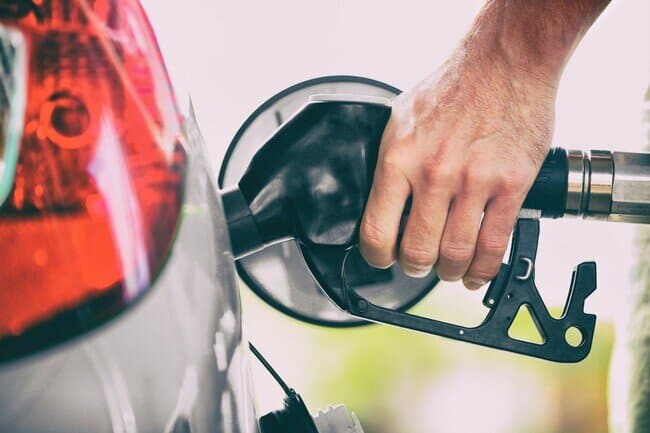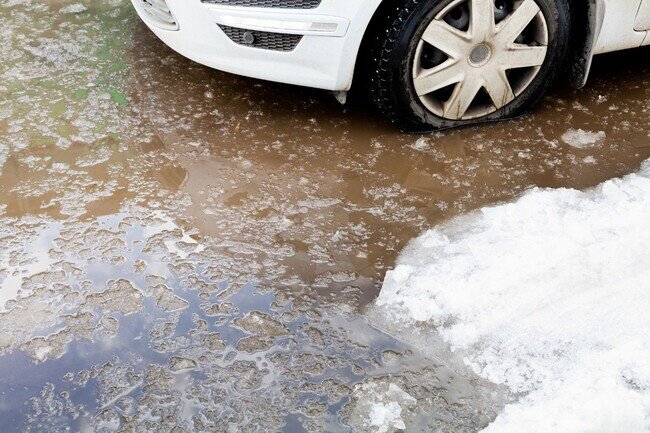Imagine getting behind the wheel of your car with a full tank of gas, excited for the open road ahead, but unsure about just how long your fuel supply will last. Don’t worry; you are not alone in pondering this crucial question. Fuel efficiency and the distance a car can go on a full tank play significant roles in budgeting for travel, long road trips, or even just daily commuting. So, let’s explore this topic and provide some insights on how to estimate the distance your vehicle can cover with a fully loaded gas tank.
300 Miles per tank is average. However, to estimate how far a car goes on a full tank, multiply tank capacity (gallons or liters) by fuel economy (mpg or km/L). Example, a 15-gallon tank with 25 mpg fuel economy would cover 375 miles. Estimate a 300-mile range to refuel before empty is safer.
A car’s fuel consumption depends on various factors, such as engine type, weight, and driving conditions. But a crucial metric for determining fuel efficiency is miles per gallon (MPG), which measures the distance a vehicle travels per gallon of fuel. Most modern cars come with a fuel efficiency rating that indicates the approximate MPG for both city and highway driving. Knowing your vehicle’s MPG rating will be pivotal in calculating the distance you can travel on a full tank.
However, in all the rental cars I have booked, I have noticed this one thing; In about 300 miles you will need to refill the tank unless it’s bad weather or most all city driving. If you want to learn why, keep reading on.
How Far Will My Car Go Not Based an Averages
To estimate the approximate coverage of your full tank, simply multiply the car’s fuel tank capacity with the MPG rating. For instance, if your car has a 11-gallon tank and an average MPG of 30, you can expect to cover a distance of around 330 miles.
However, keep in mind that these figures can vary depending on factors such as driving habits and road conditions. Being mindful about how you drive and taking care of your vehicle can ensure optimal fuel efficiency and maximize the miles you get out of each full tank.
Do you want to know how long it takes to drive, oh say 500 miles? Check out this article: How Long Does It Take To Drive 500 Miles?
Understanding Your Car’s Fuel Capacity
Fuel Tank Specifications
Your car’s fuel capacity primarily depends on the size of its fuel tank. Different makes and models of cars have varying fuel tank capacities, which can typically be found in your car’s owner’s manual or online. Generally speaking, compact cars have smaller fuel tanks while larger vehicles like trucks and SUVs have larger tanks.
Here’s a quick reference table to give an idea of average fuel tank capacities:
| Vehicle Type | Average Fuel Tank Capacity (gallons) |
|---|---|
| Compact Cars | 12 to 15 |
| Midsize Sedans | 14 to 18 |
| Large Sedans | 17 to 23 |
| SUVs and Trucks | 18 to 26 |
Remember, your car’s specific fuel tank capacity might differ from these averages, so it’s best to check the owner’s manual for accurate information.

Why Is My Fill Up Always Less Than My Fuel Tank Capacity?
When you notice that your fuel fill-up amount is consistently less than the tank’s total capacity, a few factors could be at play. Firstly, it’s common not to empty the tank completely before refueling. Typically, drivers refill their tanks ahead to avoid the risk of running out of fuel. This practice means you’re not using the entire capacity of the tank during each fill-up.
Another reason could be the design of the fuel tank and the fuel gauge. Fuel gauges are not always precisely calibrated, and they might indicate that the tank is less full than it actually is, prompting an earlier refill.
Additionally, the shape of the fuel tank can prevent it from being filled to its absolute capacity due to air pockets or the positioning of the fuel inlet, even the angle of the car. Understanding these factors can help explain why the amount of fuel you put in your car often seems less than the maximum tank capacity.
Fuel Efficiency Factors
Once you know your car’s fuel tank capacity, you can start to estimate how far it can go on a full tank. To do this, it’s essential to understand the factors that influence your car’s fuel efficiency, primarily its miles per gallon (MPG) rating. Simply put, the higher the MPG, the more distance your car can cover using a gallon of fuel.
Fuel efficiency varies significantly among car models and may also differ depending on factors like driving conditions, driving behavior, and vehicle maintenance
Here’s a list of some common factors that can impact your car’s fuel efficiency:
- Engine type (gasoline, diesel, hybrid, electric)
- Vehicle weight and aerodynamics (a pickup empty vs. hauling a fridge)
- Acceleration habits (smooth vs. aggressive)
- Road conditions (city vs. highway) (wet vs. dry)
- Tire pressure and maintenance (max tire pressure rated on the tire, improves MPG over car recommended PSI)
By considering your car’s fuel capacity and fuel efficiency, along with any external factors that may impact fuel consumption, you can better estimate how far your car will go on a full tank. Keep in mind that real-world driving conditions will vary, so it’s always a good idea to have some reserve fuel and not rely entirely on estimations. Did you ever run out of fuel on the way to the station?
Calculating Distance Per Full Tank
Average Mileage Calculation
To calculate the distance you can travel on a full tank, the first step is to determine your average mileage. This can be found by dividing the total miles you’ve traveled by the gallons of fuel used. For example:
| Miles Driven | Gallons of Fuel Used | Average Mileage |
|---|---|---|
| 400 | 10 | 40 mpg |
In this example, the average mileage is 40 miles per gallon (mpg). To find out how far your car will go on a full tank, simply multiply this number by the size of your car’s fuel tank – e.g. a 12-gallon tank would have a range of 480 miles (40 mpg x 12 gallons).
Impact of Driving Habits on Range
Driving habits can significantly impact the distance you can travel on a full tank. Here are some factors that can affect your car’s fuel efficiency:
- Speed: Maintaining a consistent speed and avoiding rapid acceleration or deceleration can help improve fuel efficiency.
- Weight: Carrying heavy loads or extra passengers can decrease your car’s range.
- Air conditioning: Using the air conditioner can reduce fuel efficiency, so consider using the vents or opening windows when possible. (still debated based on aerodynamics of car and wind drag with windows open and MPH your driving)
- Proper maintenance: Keeping your car well-maintained with regular tune-ups, oil changes, and proper tire inflation can help you achieve optimal fuel efficiency.
Influence of Road Conditions
Lastly, road conditions can influence how far your car can go on a full tank. Some factors include:
- Hills: Driving uphill requires more energy, thus reducing your car’s range.
- Traffic: Frequent stop-and-go situations, such as in heavy traffic, can lower fuel efficiency.
- Road quality: Poorly maintained roads with potholes or uneven surfaces may increase your car’s fuel consumption.
- Weather: Cold weather can affect engine performance and reduce fuel economy, while driving in heavy rain or snow will cause increased rolling resistance and decrease efficiency.

Preparing for these factors and driving mindfully can help you get the most out of your car’s performance and maximize the distance you can travel on a full tank!
Frequently Asked Questions
How can you calculate the number of miles you’ll get per full tank?
To calculate the number of miles you’ll get per full tank, you need to know two key pieces of information: the fuel efficiency of your car (miles per gallon or MPG) and the size of your gas tank (in gallons). Simply multiply these two numbers together to get your car’s range on a full tank. For example, if your car has a fuel efficiency of 30 MPG and a 15-gallon tank, you’ll get approximately 450 miles per full tank.
What factors affect a car’s fuel range on a full tank?
Numerous factors can affect a car’s fuel range on a full tank, including:
- Driving style: Aggressive driving, such as rapid acceleration and hard braking, can reduce your car’s fuel efficiency.
- Speed: Driving at high speeds can result in increased air resistance, which lowers fuel efficiency.
- Terrain: Driving up steep hills or on uneven surfaces can reduce the miles per gallon your car can achieve.
- Weight: Carrying heavy cargo or passengers can lead to a decrease in fuel efficiency.
- Maintenance: Poorly maintained vehicles might consume more fuel than their well-maintained counterparts.
How do you estimate the cost of fuel for a full tank?
To estimate the cost of fuel for a full tank, you need the price per gallon of gasoline and the size of your gas tank (in gallons). Multiply these two numbers to get the total cost of filling up your tank. For example, if gasoline costs $3 per gallon and your vehicle’s gas tank holds 15 gallons, it would cost $45 to fill up the tank completely.
What’s an average distance a vehicle can travel on a full tank?
Most car & truck manufacturers get in and around 300 miles per tank. it does vary based on the individual vehicle, but 90% of cars will get that and leave some for “get to the gas station gallons”
For example, the average distance for a compact car could be around 350-450 miles with a full tank, while a large SUV might average around 250-350 miles.
How long can you expect a full tank of gas to last during a road trip?
The length of time a full tank of gas will last on a road trip depends on your driving speed, your car’s fuel efficiency, and the distance you are traveling. If you drive at a constant speed and maintain good fuel efficiency, driving 400 miles on a 400-mile range will take roughly 6.5 hours at 60 mph.
However, factors such as traffic, driving speed, terrain, and frequent stops could affect the time it takes to deplete your fuel tank.
How often should you fill up your tank to avoid running on empty?
To avoid running on empty, it’s recommended to refill your tank before it reaches the quarter-tank mark. This ensures that you always have some reserve fuel in case of emergencies or unexpected delays. In winter driving conditions, it is recommended to fill up at half a tank.
This is so you can maintain warmth in the car if you get stranded. Additionally, consistently driving on a low fuel level can put strain on your car’s fuel pump, leading to potential issues down the road.


